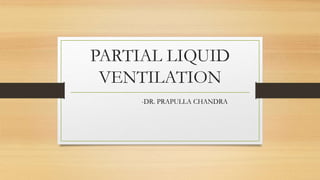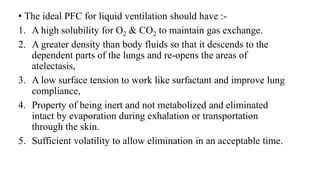This document discusses partial liquid ventilation, a technique where the lungs are filled with an oxygenated perfluorochemical liquid at the functional residual capacity during mechanical ventilation. Two key types are discussed: total liquid ventilation where the entire lung is filled with liquid, and partial liquid ventilation where only the FRC is filled. While theoretical advantages include improved oxygenation and recruitment of collapsed alveoli, clinical trials have shown no clear benefits over conventional ventilation and some increased risks. As a result, liquid ventilation is not currently recommended for routine clinical use.






















































